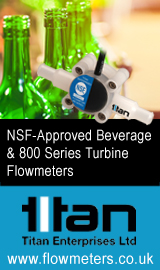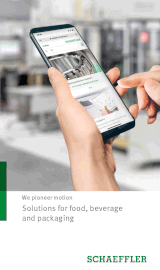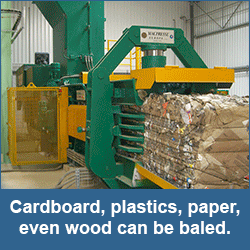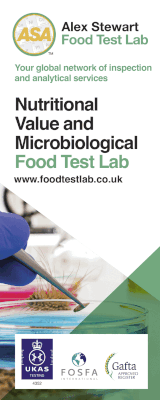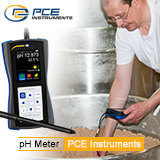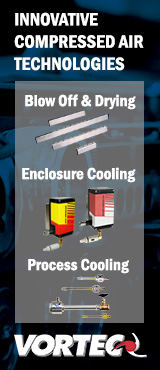What you need to know about machine guarding for the food and drink processing and packaging sector
Steve Allen CMSE, a member of standards committee BSI MCE/3 (Safeguarding of machinery) and National Sales Manager at Procter Machine Safety, discusses the issues relating to machine guarding that are of particular importance to end users in the food and drink processing and packaging sector.

Caption: Machinery in the food and drink processing and packaging sector has to meet very demanding requirements.
What you need to know about machine guarding for the food and drink processing and packaging sector
If you are an employer the law places certain obligations on you relating to the health and safety of your workers. Three pieces of legislation that are particularly important are The Health and Safety at Work etc Act 1974, The Management of Health and Safety at Work Regulations 1999 and The Provision and Use of Work Equipment Regulations 1998 (PUWER 98). Furthermore, any machinery you purchase should already be CE marked by the supplier to indicate compliance with the Machinery Directive, which is implemented in the UK by The Supply of Machinery (Safety) Regulations 2008 as amended.
Unfortunately, because of the close interaction that often exists between workers and machinery in the food and drink processing and packaging industry, injuries are not uncommon. For example, provisional statistics from the HSE (Health and Safety Executive) for the year 2016/17 show there were two fatalities in this industry and 3296 reported non-fatal injuries, of which 2689 (82 per cent) were over-seven-day injuries. Expressed as a rate of injuries per 100,000 employees, these figures indicate that this is one of the most dangerous of all the manufacturing industries. According to the HSE, around 30 per cent of fatal injuries in this industry are caused by plant and machinery and around 30 per cent of non-fatal injuries are caused by conveyors. More information about injuries is available on the HSE website, but it is clear that machinery safety needs to be taken very seriously in this sector, with guarding having a vital role to play.
Guarding on food and drink processing and packaging machinery has to meet particular criteria, such as being manufactured from materials that can withstand regular washdowns, and designs that avoid dirt traps. Nevertheless, the guarding first and foremost has to protect users and others in the vicinity in order that the machine meets the Essential Health and Safety Requirements (EHSRs) of the Machinery Directive and can be CE marked to indicate its compliance.
The easiest way of meeting the EHSRs is to comply with relevant harmonised machinery safety standards. Some of these are generic and apply to all machine types, such as EN ISO 12100 (general design principles, risk assessment and risk reduction), EN ISO 14120 (general requirements for machine guards) and EN 1672-1 (basic concepts and safety requirements for food processing machinery). In addition, different types of machine for food and drink processing and packaging often have particular risks associated with them and, therefore, have their own machine-specific standards known as C-type standards – for example, EN 453 (dough mixers), EN 12331 (mincing machines) and EN 16743 (automatic industrial slicing machines). Here in the UK the equivalent national standards are published by BSI and the references are preceded with BS (eg BS EN ISO 12100).
Something to be aware of, particularly with imported machinery, is that CE marking to the Machinery Directive is self-certified, so a CE mark is no guarantee that a machine is, in fact, safe. Some companies therefore insist on a CE compliance examination as part of the factory acceptance process but, more often, a PUWER inspection is conducted after the machine has been installed and before it is put into use for the first time.
PUWER inspections are also required periodically to detect any deterioration or if there is a significant change in use (for example, a different type of food product is to be processed) or if there has been any other relevant change in circumstances, such as after being modified, sustaining serious damage or being relocated.
Of course, if any shortcomings are identified during a PUWER inspection or, indeed, at any other time, then these need to be rectified or mitigating measures put in place. Typically this will involve the design and manufacture of physical guards and/or additions to the safety-related control system, including guard switches or safety light curtains.
The design, manufacture and installation of guarding for food and drink processing and packaging machinery is a specialised area. However, guarding that is well executed can provide the necessary safety and compliance with standards without hindering normal operation, cleaning or maintenance. Procter Machine Safety has been designing, supplying and installing bespoke guarding for the food and drink industry for over 30 years, with each project undertaken so as to meet the needs of the customer as well as the latest HSE requirements and all current UK and European legislation. Working from CAD data for the machine or measurements made during site surveys of existing machinery, the designers ensure the guards can be installed quickly and easily. If required, the electrical aspects of the installation can also be undertaken, including any necessary modifications to safety-related control systems and installation of guard interlocks.
More recently, Procter Machine Safety has offered machine guarding compliance surveys, PUWER inspections and risk assessments. In fact the company now offers a complete ‘one stop shop’ for machine guards, from site surveys, through design to manufacture and installation, including electrical integration.
Find out more about the services offered by Procter Machine Safety at www.machinesafety.co.uk, or enquire about specific projects by telephoning 02920 855758 or emailing info@machinesafety.co.uk.





